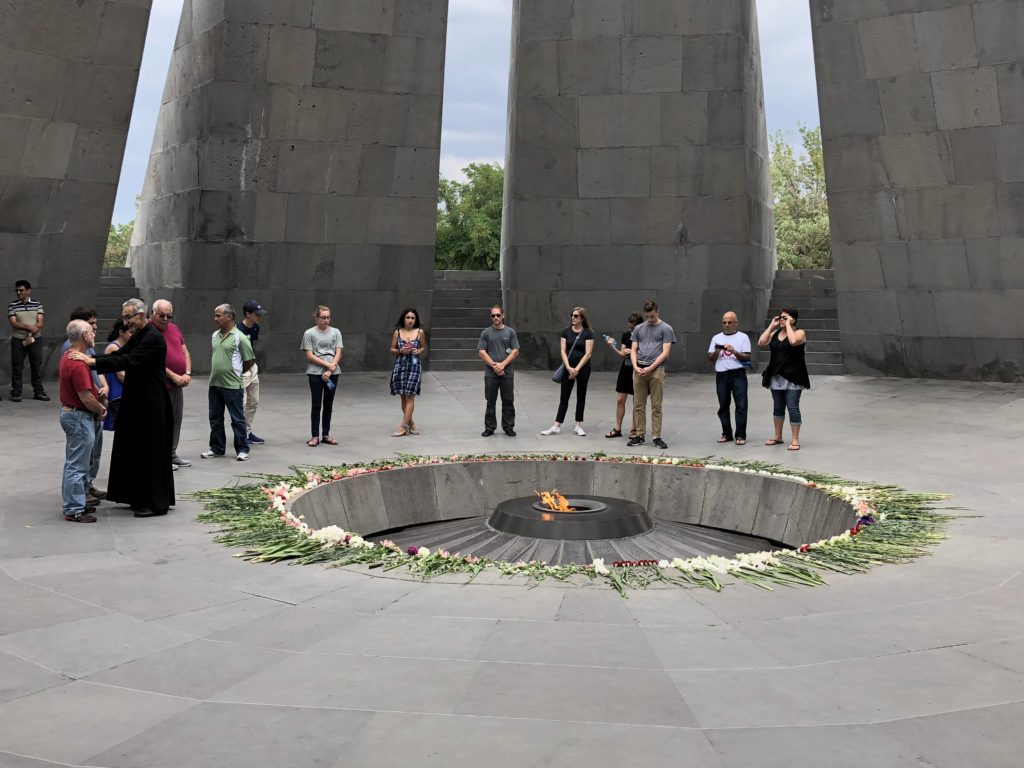
Lover’s Park
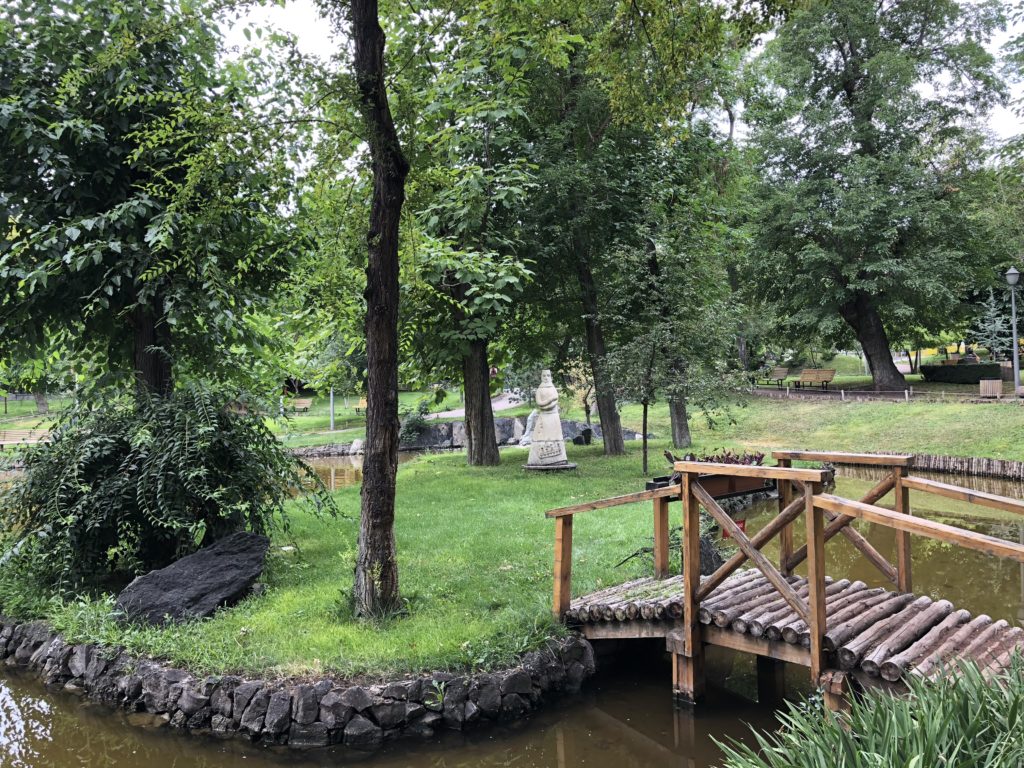
A fun game to play while traveling around the former Soviet Union is to uncover the name changes every square, park and monument went through before the once powerful nation fell apart. The first park to be laid out on this plot of land over 200 years ago was known as Kozern Park and retained this name until the Soviets took over and renamed it Pushkin Park. I guess Pushkin didn’t cut the mustard because in 1970 they changed the name once again to Friendship Park to symbolize the “friendship” between all the Soviet SSRs. After independence, Yerevan decided to tell it like it was: this park is Yerevan’s most romantic and popular make-out spot, so let’s simply call it Lover’s Park and not pretend anyone is coming here to recite Pushkin!
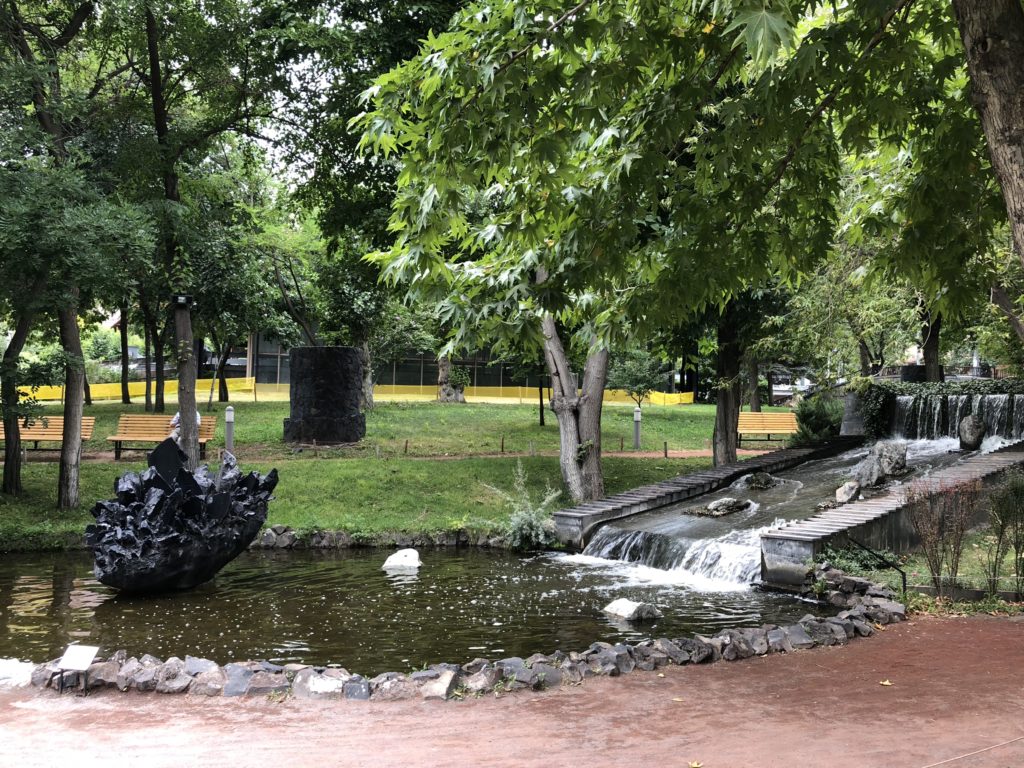
Over the past decade, Lover’s Park’s care has been taken over by an Armenian philanthropist who is slowly turning the space into a modern sculpture garden. All of the stairs have been removed to ensure a fully accessible experience and WiFi is provided free of charge. Even with all these perks, Lover’s Park remains something of a hidden gem in Yerevan. Perhaps people are too taken with the National Assembly right next door to notice the entrance? Regardless, it was my favorite green space in the capital.
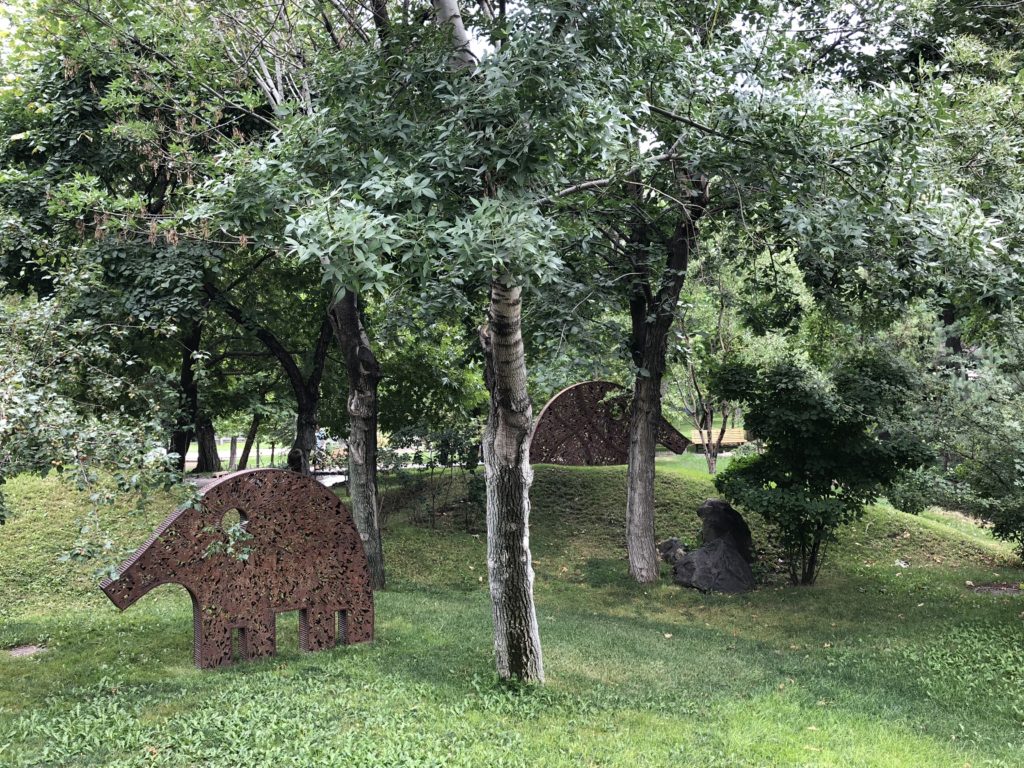
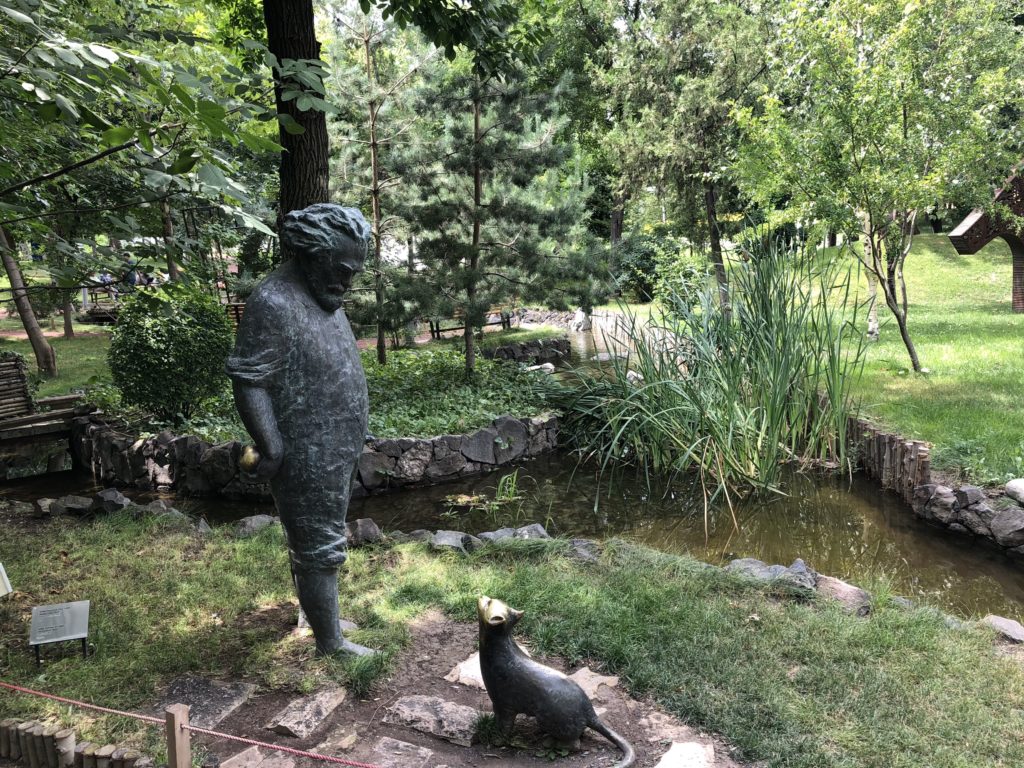
Zoravor Surp Astvatsatsin Church
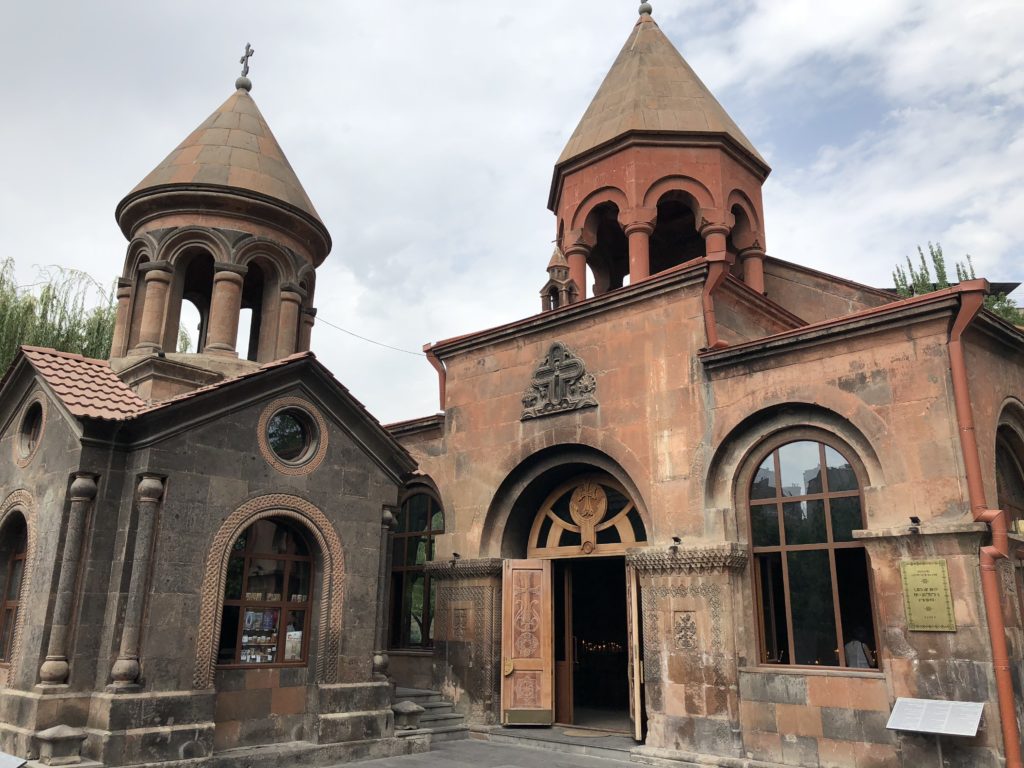
The Zoravor Surp Astvatsatsin Church is the oldest surviving church in Yerevan, dating back to the late 17th Century. It is rather hidden away from the street, nestled in the courtyard of several apartment buildings and don’t be afraid if you have to stop a local on the street to ask for direction. I happened to visit during a vespers service and although the chapel is small, the fantastic acoustics allowed the all-male choir to sound like they were singing in a vaulted-ceiling cathedral. The gardens are very quiet and a nice spot to stop and take stock of your thoughts.
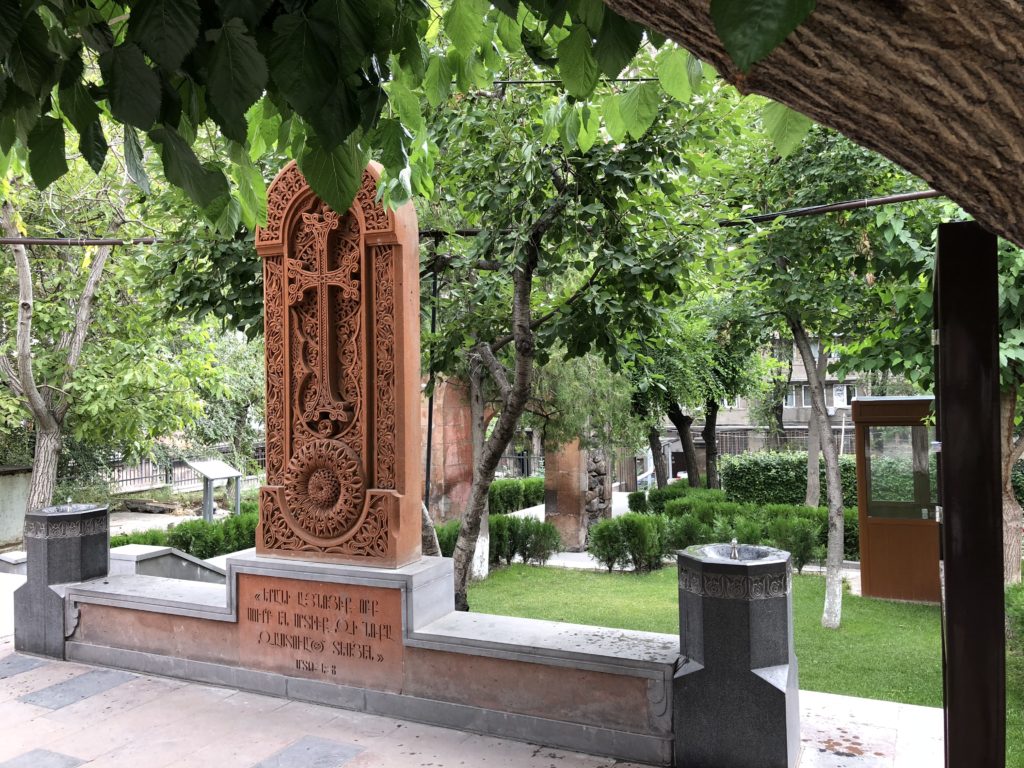
Matenadaran
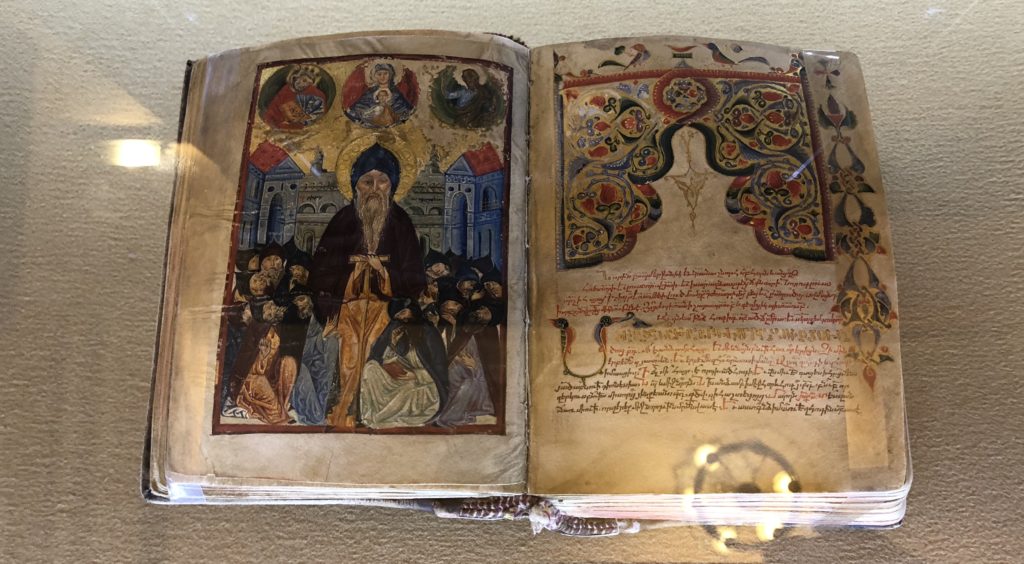
The Matenadaran (literally the book repository) has been an Armenian institution since the 5th Century AD, although the current location and museum have only existed since 1959. The Matenadaran, which has become the largest assemblage of Armenian language text in the world, began primarily as a collection of ancient religious texts. Historians and philosophers’ texts were slowly added; the scope eventually broadened to include scientific catalogues, illustrations of flora and fauna, as well as charts and diagrams written by apothecaries, chemists and mathematicians.
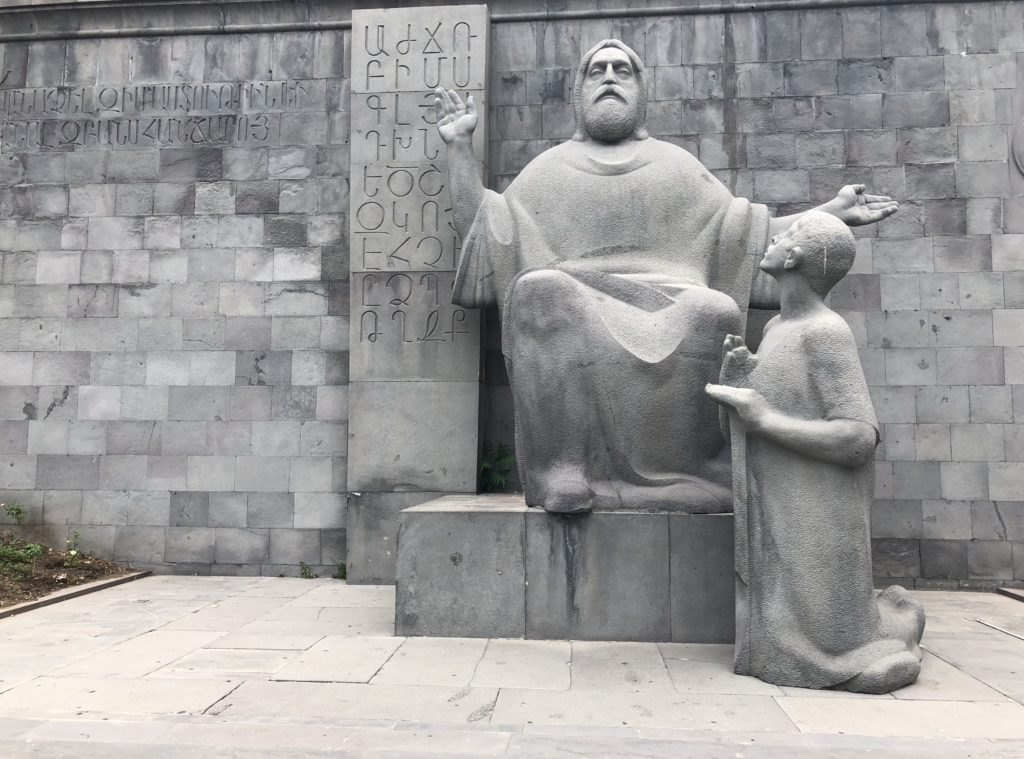
Although the Armenian language had been spoken for centuries prior, Mesrop Mashtots invented the unique Armenian alphabet in 405 AD; the oldest surviving Armenian text was a Bible he translated into his newly created letters. There is a statue of him proclaiming his alphabet to Armenia in front of the Matenadaran, but even cooler is the sculpted parade of letters along the avenue leading up to the museum. The alphabet is a huge source of cultural pride and any attempt to Latin-ize the script has been met with resistance.
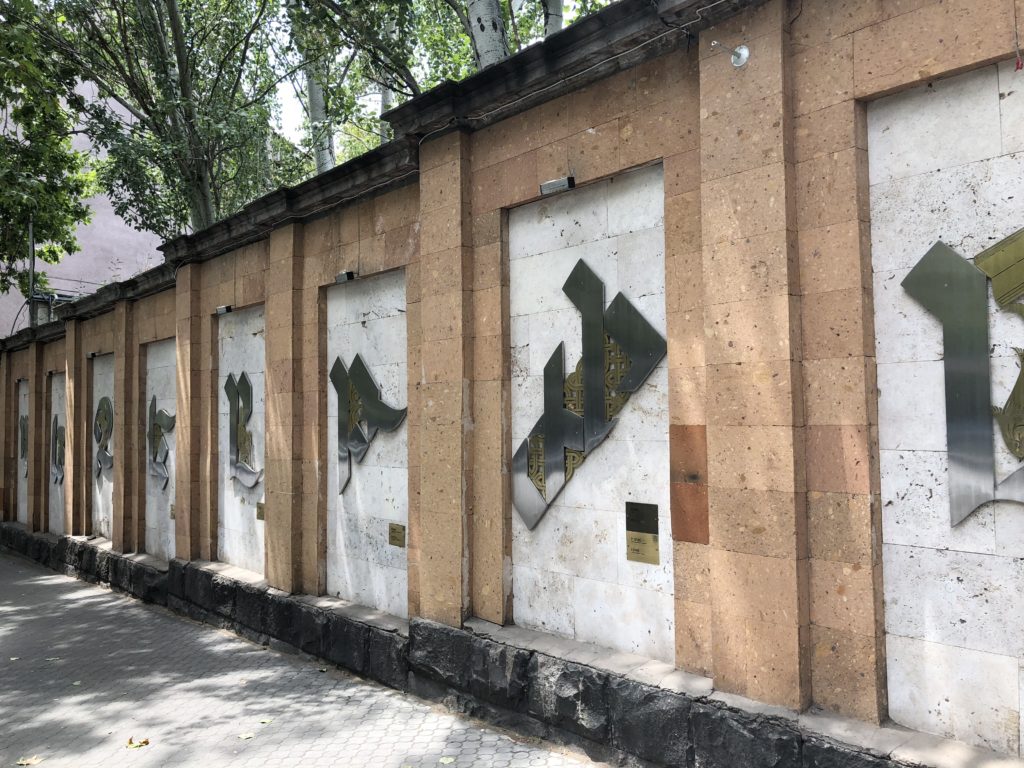
I believe my burgeoning love for perusing old manuscripts blossomed at the Chester Beatty Library in Dublin, where I end up whiling away a few hours, engrossed in Beatty’s collection of ancient texts. There’s solace to be found spending time with these beautiful books that have survived centuries. The detail and craftsmanship apparent on every page is so immense and one begins to dwell on how rushed everything is in today’s world in comparison; how shoddily everything is constructed and accepted as OK. Now here you are, surrounded by objects that people literally slaved away for years in order to ensure their quality. In a modern world where nothing is built to last, it truly is all the more remarkable.
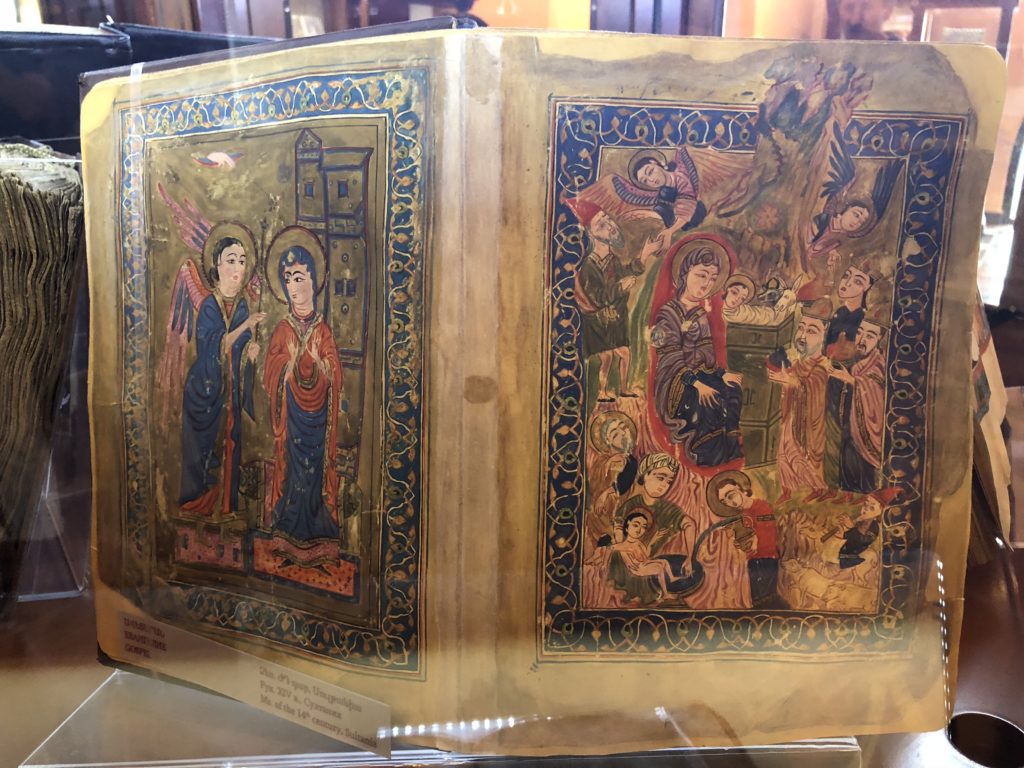
The Green Bean
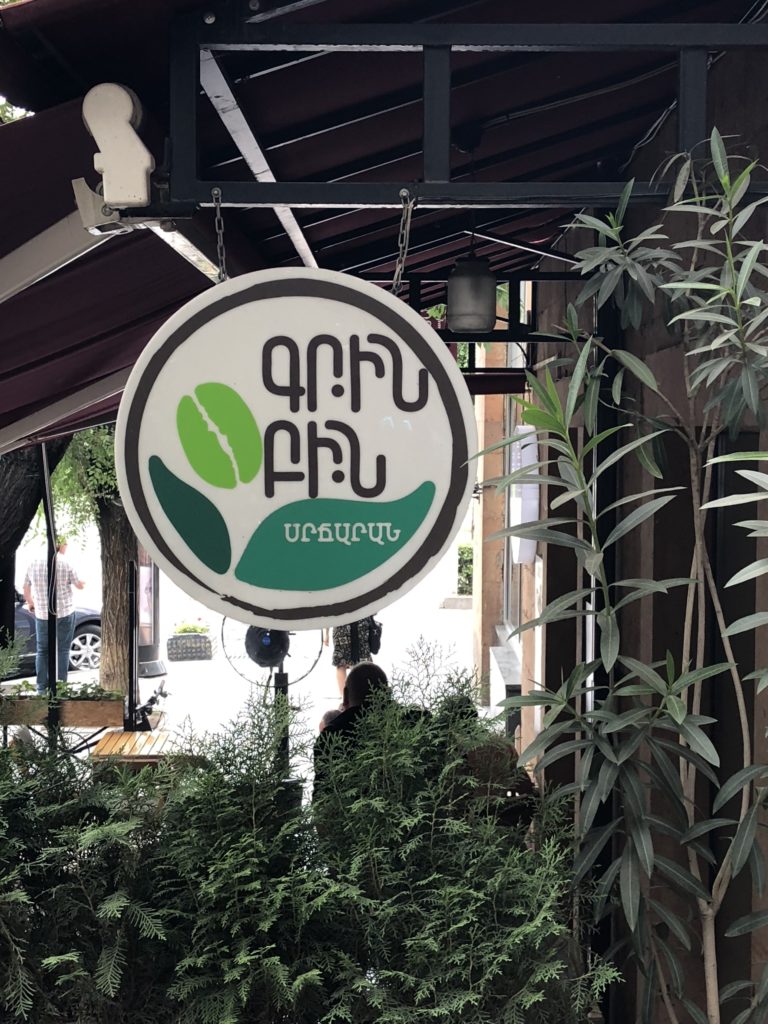
Discussing the alphabet above made me remember I took a photo of The Green Bean’s beautiful sign and thought I would digress for a moment to discuss an establishment devoted to sustainability and flavorful food.
The Green Bean was my go-to place to grab a bite in Yerevan. There are several locations in the city and it holds the records for two firsts in the capital: it was the first all vegetarian/vegan restaurant and it was also the first eatery to completely ban smoking inside. (Smoke-free areas are becoming more common throughout The Balkans and The Caucasus, but be prepared to find patrons still lighting up indoors, whether it’s legal or not.)
Here you’ll discover a menu focused on healthy and mindful eating. The popularity of The Green Bean has caused quite a few other vegetarian restaurants to pop up all over the city, many of them excellent. Traditional Armenian cuisine features a lot of meat, but I found Yerevan to be the most vegetarian-friendly capital in the Caucasus.
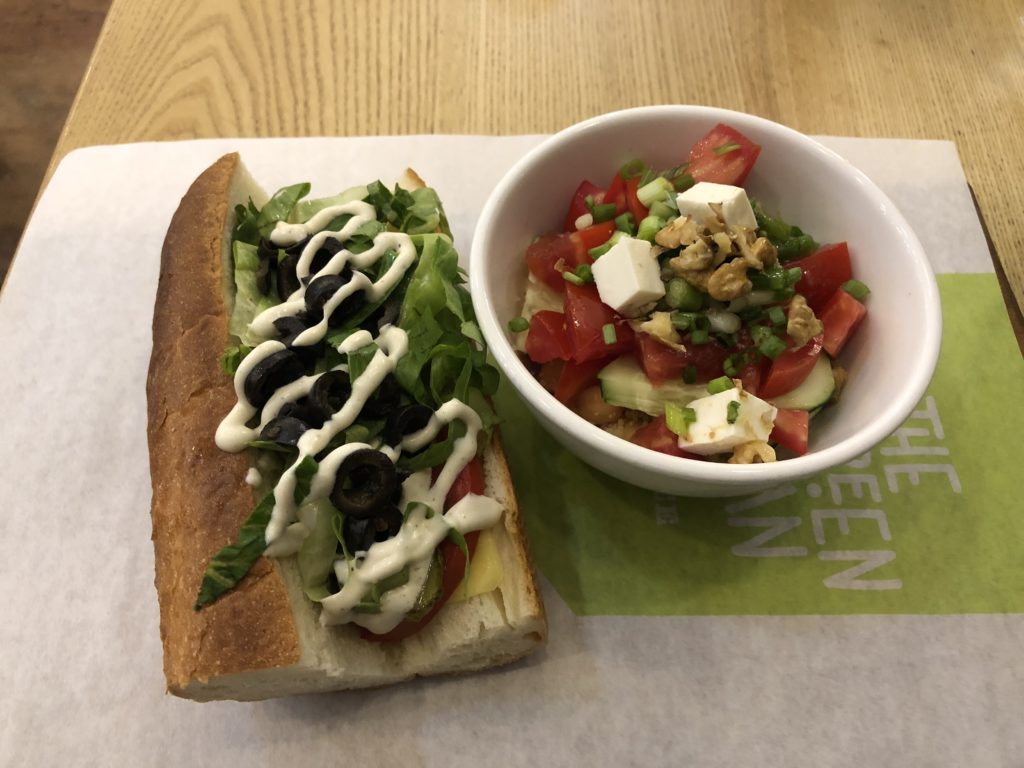
Armenian Genocide Memorial Complex
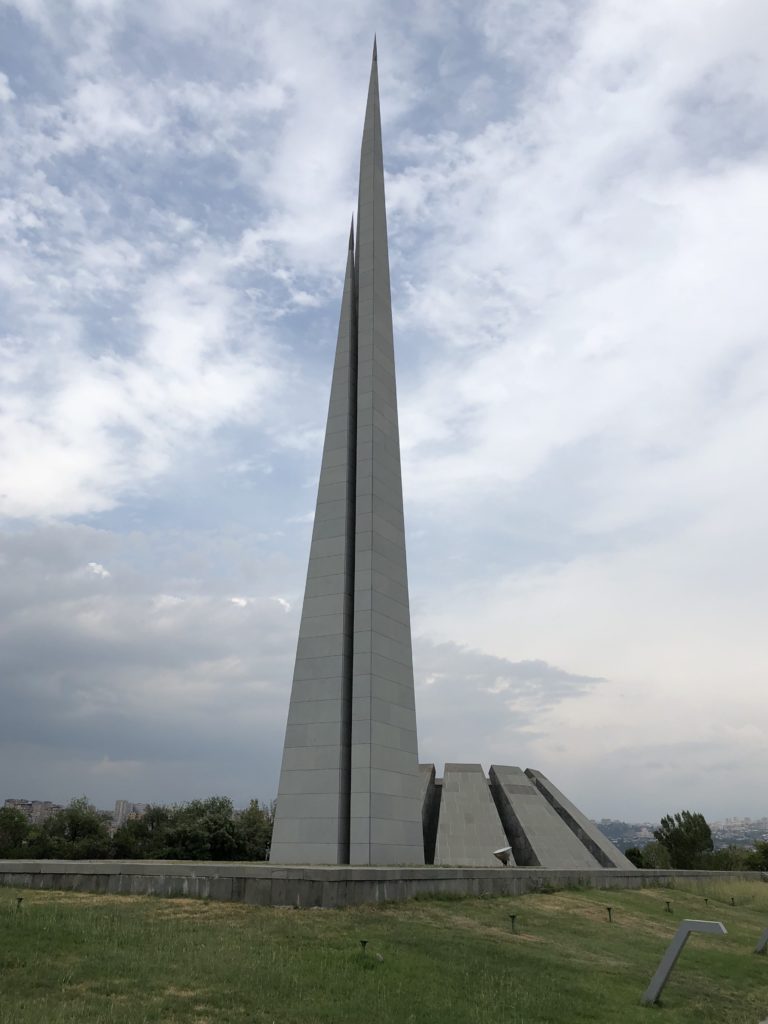
The topic of the Armenian Genocide is as grim as it gets, but despite the intense material, the memorial and adjoining museum located on Tsitsernakaberd hill aim to provide comfort and relief for the descendants of the victims. Healing will never truly begin though until Turkey fully admits its role in the genocide, something Armenians long for in order to bring closure to this ordeal that has hung over the population for more than a century.
A little background: the traditional western portion of Armenia fell under Ottoman control in the 16th Century and from that point on there was a sizable Armenian minority in Constantinople, Ankara and the eastern Ottoman Empire. The Armenians’ Christianity granted the citizens few rights and privileges in the predominantly Muslim society, and although reforms by the Ottoman government were promised, they were rarely enacted and enforced.
A new hope emerged in 1908 when the Young Turks overthrew the old regime with the full support of the Armenian minority who believed the upstart political party would bring positive change to their community. Much like the Baltic States welcoming the Nazi Army to liberate them from the Soviet occupation, the Armenians had no idea how much worse things were going to get.
In 1915, while the rest of Europe was engulfed in WWI, the Young Turks sanctioned a systemic program of killing all able-bodied Armenian men and driving out the women, children and elderly on death marches to present day Syria and Iraq. The deaths were particularly brutal and cruel, including burning thousands of people alive and death by medical experimentation. Women were constantly raped on the death marches as a way to psychologically control the captured victims. Armenian intellectuals and priests in Constantinople and Ankara were arrested and executed.
The genocide occurred in several waves, but by 1923, 1.5 million Armenians had been killed, 130,000 children were orphaned and nearly 2 million Armenians had become refugees, spreading across the globe to create the diaspora we know today.
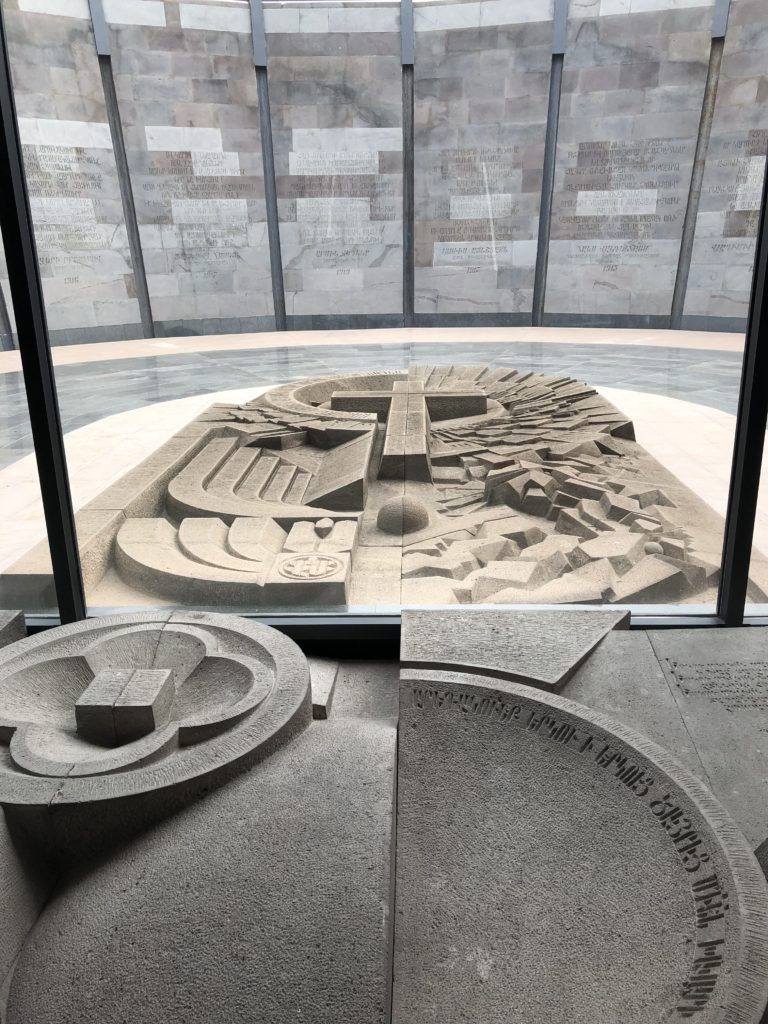
While most nations recognize the Armenian Genocide, one of the biggest issues for present day Armenians is that Turkey refuses to call what happened “genocide.” They admit that there was killing and fighting and conflict, but their version is that it was war time and the fighting was not linked to ethnic cleansing, despite significant evidence to the contrary. Political tensions remain between Turkey and Armenia over this issue and other members of the international community walk a tightrope to maintain relationships with both countries. (A tightrope you also have to walk as a tourist with all three nations of The Caucasus when discussing post-Soviet history.)
The Genocide Museum has some fairly horrific imagery and leads you step-by-step through the build up, execution and aftermath of the genocide. Most chilling are the eyewitness accounts, often from European missionaries who were allowed to tend to the orphaned children during those years.
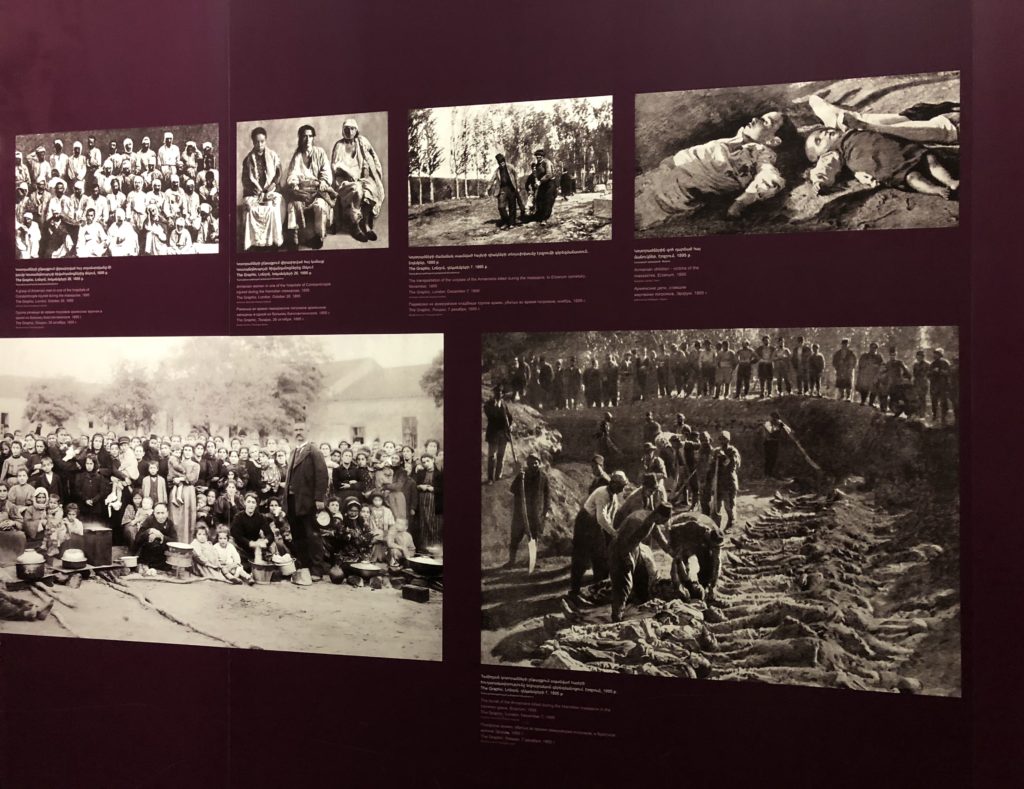
On the path leading to the museum is Memory Alley, a park where foreign heads of state have planted trees after visiting the complex. You can walk around and read all the plaques stating the names of leaders and countries who have honored and recognized the genocide.
The memorial has a sharp spire that represents the rebirth of the Armenian people after the genocide. The circular dome has 12 slabs that symbolize the twelve regions lost to Turkey during the conflict. Inside is the eternal flame where people leave flowers and can receive a blessing from an Armenian priest.
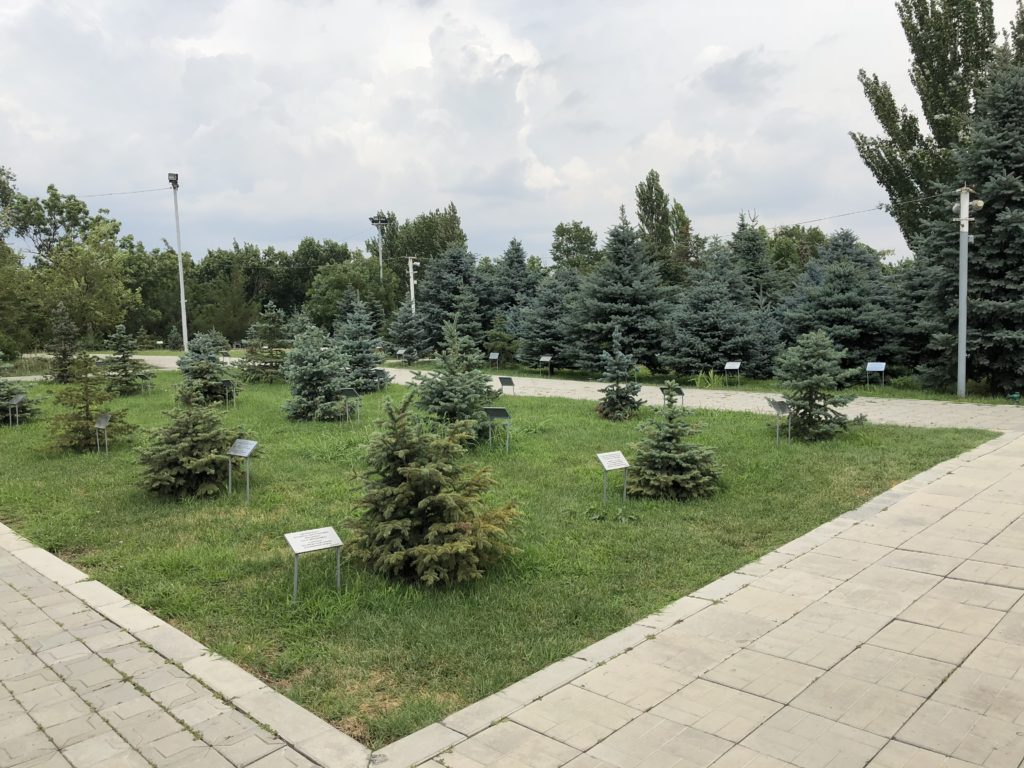
You can’t spend everyday of your travels dealing with such heavy subject matter, but you shouldn’t shy away from it either. The Holocaust; the Slave Trade; the Armenian Genocide; these things can’t be swept aside and you can’t begin to understand modern history or politics without this historical background knowledge.
I think it’s also easy to go through a museum like this and ask, “How did this happen? Why didn’t anyone intervene and stop this?” And yet, it’s often easier to go to a genocide museum or Holocaust memorial 80-100 years later than to take action or raise your voice about genocides occurring in the world today. 50 years from now, will people be visiting a genocide museum in South Sudan and asking the same questions: How did this happen? Why didn’t anyone intervene and stop this?
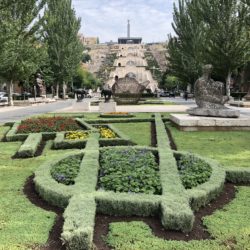
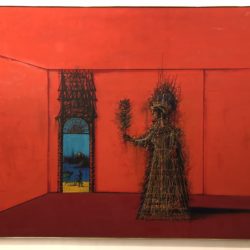
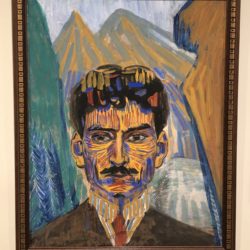
Je tiens à remercier Ben de son parcours plus profond dans les musées pour nous faire par des choses qu’on ne connaissent pas..
Cela nous a donné l’émotion de vivre la réalité des choses..comme Ben…
Edem, c’était un article d’émotion à écrire. Cela me rend heureux que vous ayez réagi avec émotion. Nous devons apprendre de cette histoire si ceci ne se reproduira pas. Merci.
Ça été un grand plaisir pour moi de faire la lecture de cet article, merci Ben pour ton parcours dans ces musées
Merci Robert. Le sujet n’était pas facile à écrire, mais il est important de confronter cette histoire directement. Merci pour votre soutien.